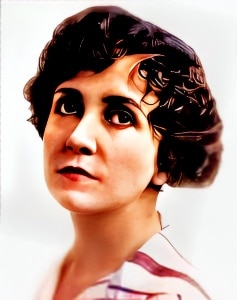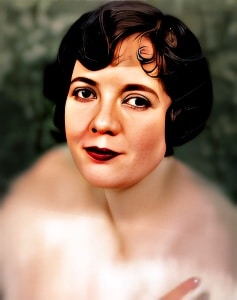 Florence Turner, born on January 6, 1885, in New York City, stands as a notable figure in the early days of silent cinema, earning the moniker “Vitagraph Girl” for her significant contributions to the burgeoning film industry.
Florence Turner, born on January 6, 1885, in New York City, stands as a notable figure in the early days of silent cinema, earning the moniker “Vitagraph Girl” for her significant contributions to the burgeoning film industry.
Her journey into the world of entertainment began at a tender age, driven by the ambitions of her mother.
Turner’s initiation into the performing arts occurred when she was merely three years old, thrust onto the stage by her determined mother. This early exposure to the world of entertainment laid the foundation for a career that would later transcend the boundaries of the stage and embrace the emerging medium of cinema.
In 1906, Florence Turner took a pivotal step in her career by venturing into the nascent motion picture business. She signed with Vitagraph Studios, a pioneering film production company that played a crucial role in shaping the landscape of early silent cinema. Turner’s film debut, titled “How to Cure a Cold,” premiered on June 8, 1907, marking the beginning of her cinematic journey.
During this era, the concept of film stardom as we know it today was in its infancy. The absence of elaborate screen credits meant that performers often went unnamed, and the focus was primarily on the company producing the film. However, as the narrative complexity of movies evolved, certain individuals began to emerge with a vague identity, such as the “Vitagraph Girl.”
Florence Turner’s association with Vitagraph Studios allowed her to play a significant role in shaping the evolving nature of cinematic storytelling. Her contributions extended beyond mere presence on screen; she became a symbol representing the studio and the emerging art form of filmmaking.
One of Turner’s notable roles during this period was her portrayal of Lucie Manette in the cinematic adaptation of Charles Dickens’ “ A Tale of Two Cities.” While the film landscape was still navigating the transition from simple incidents to more structured narratives, Turner’s performances contributed to the gradual recognition of actors in the emerging film industry.
As the Vitagraph Girl, Florence Turner became a familiar face to audiences of early silent cinema. Her work not only reflected the changing dynamics of storytelling on screen but also contributed to the development of cinematic language and expression.
Florence Turner’s career spanned a transformative period in the history of cinema, witnessing the evolution from silent, black-and-white shorts to more complex narratives. While her contributions may not have been accompanied by the star-studded recognition seen in later years, the Vitagraph Girl remains a significant figure in the silent film era, embodying the spirit of a pioneering era that laid the groundwork for the cinematic art form we cherish today.




